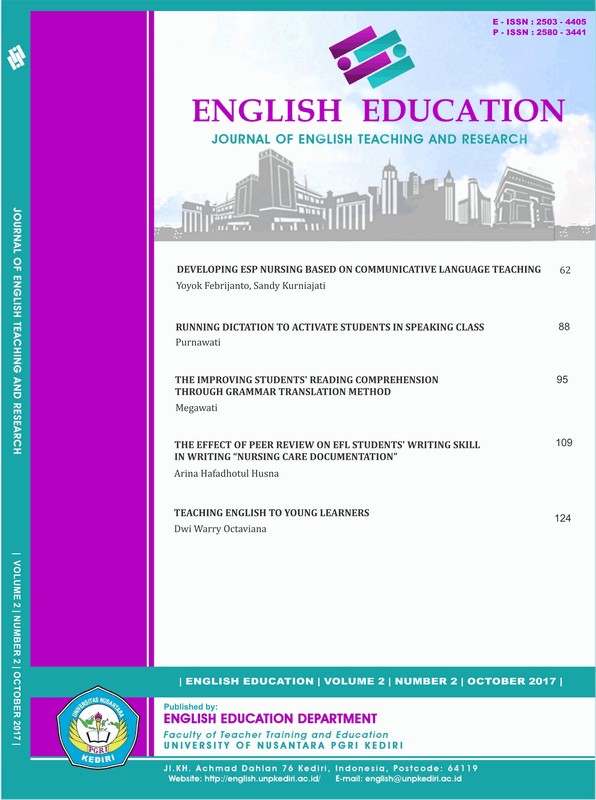DEVELOPING ESP NURSING BASED ON COMMUNICATIVE LANGUAGE TEACHING
DOI:
https://doi.org/10.29407/jetar.v2i2.885Abstract
ESP nursing materials is an important component in the success of educational programs, especially in the field of nursing. The development of English learning is now more emphasis on the authenticity of the material that is contextual activities or work involved, one of which is in nursing profession. Communicative language teaching (CLT) sets principles about the teaching of communicative competence not confined to verbal communication but also includes written communication, consists of four skills especially on ESP nursing based on nursing care (assessment, nursing diagnosis, planning(intervention & implementation, and evaluation) as the main source of objective achievement in teaching learning process. The development method used is adapted from Borg and Gall's model involved 24 students, 1 expert in English education, 2 experts in nursing education, and 1 practitioner of hospital. Researchers developed materials (4 chapters) based needs analysis (students’ need and reviewing existing syllabus) with four language skills. Result of expert validation (materials evaluation based on contents, exercises, communication, and general elements) was very good (average score 3.5) and result of students’ try out to give the decision of the product quality, the average score was 3.2, it meant the materials was acceptable and eligible to be used by the nursing students as autonomous learning. In conclusion, the final product can be used as a model of instructional materials to teach English nursing as ESP materials.
Keywords: ESP Nursing, CLT, Material Development
Downloads
Downloads
Published
Issue
Section
License
Authors who publish with this journal agree to the following terms:
- Copyright on any article is retained by the author(s).
- The author grants the journal, the right of first publication with the work simultaneously licensed under a Creative Commons Attribution License that allows others to share the work with an acknowledgment of the work’s authorship and initial publication in this journal.
- Authors are able to enter into separate, additional contractual arrangements for the non-exclusive distribution of the journal’s published version of the work (e.g., post it to an institutional repository or publish it in a book), with an acknowledgment of its initial publication in this journal.
- Authors are permitted and encouraged to post their work online (e.g., in institutional repositories or on their website) prior to and during the submission process, as it can lead to productive exchanges, as well as earlier and greater citation of published work.
- The article and any associated published material is distributed under the Creative Commons Attribution-ShareAlike 4.0 International License








 Article template
Article template



